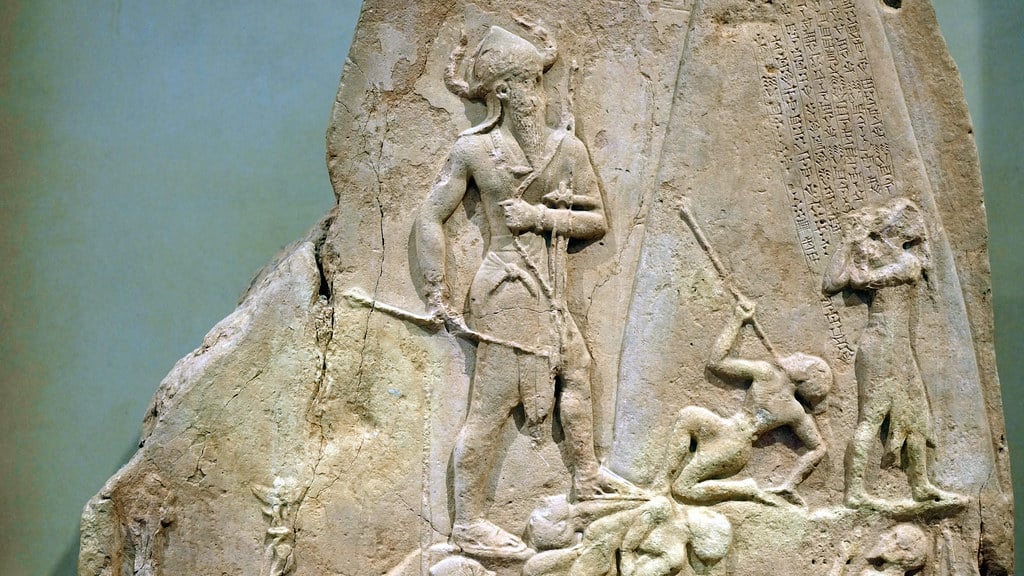Religious relics have been found all over the world. But why was the sculpture by the mountainside of a small Kurdish town important? Let’s find out why Naram-Sin is considered a relic and what made it special.
For centuries, Kurdish locals knew an ancient rock relief simply as Naram-Sin. Later, archaeologists identified it to be a depiction of Naram-Sin of Akkad, King of the Akkadian Empire who ruled about 4,200 years ago.
Who was Naram-Sin of Akkad?
Naram-Sin was the Akkadian Empire’s final great ruler and the grandson of Sargon the Great, the empire’s founder. After Sargon, he is considered the most important Akkadian ruler. In Mesopotamian tradition and tale, Naram-Sin and Sargon became near-mythical beings.
Between 2261 and 2224 BC, Naram-Sin governed the Akkadian empire. Naram-Sin was the subject of numerous myths, legends, and hymns. Still, he gained legendary status as the monarch who destroyed the Akkadian Empire with his impious crimes, a story known as The Curse of Agade.
Naram-Sin was depicted as a tremendously pompous monarch in all the tales and folklore. He is the first Mesopotamian King to regard himself as a god throughout his reign. Additionally, he signed official documents with the seal of a god, himself as Akkad’s god. His reign was the pinnacle of the Sargonic Dynasty, and upon his demise, the kingdom began to collapse.
During his 36-year reign, Naram-Sin enlarged the empire’s borders, maintained internal order, promoted trade, and personally marched with his army across the Persian Gulf and probably to Egypt.
Naram-Sin declared himself to be King of the four quarters of the Universe. He began to sign his name in a bolder gesture, including a designation of a god. Naram-Sin felt that he was on equal footing with the gods of the Mesopotamian pantheon.
Naram-Sin passed of natural causes and was replaced by Shar-Kali-Sharri, who ruled from 2223-2198 BC. Shar-Kali-Sharri’s reign began similarly to his predecessors’ in that he, too, was forced to expend enormous effort suppressing revolts following his father’s death. But, unlike his predecessors, he appeared to lack the ability to maintain order and was unable to avert further external attacks on the empire. (Source: World History)
The Two Significant Relics of Naram-Sin
Naram-Sin placed himself as equals to the Mesopotamian gods. This was seen in the two most significant relics of Naram-Sin: his Victory Stele and the rock relief on a top of a mountain, southwest of the city of Sulaymaniyah.
The Naram-Sin Victory stele dates to approximately 2250 BC. Naram-Sin leads the Akkadian army to victory against the Lullubi, a mountain people from the Zagros Mountains. It depicts the King scaling treacherous cliffs into enemy land. On the left are the disciplined imperial forces advancing information over the broken and defeated resistance.
King Naram-Sin is represented as the central character, towering above his adversary and his warriors, with all eyes, fixed on him. The feeble opposing forces are described as being flung off the mountainside, impaled by spears, fleeing and pleading for mercy, and trampling underfoot by the King.
This sculpture’s portrayal of Naram-Sin’s Stele is exceptional in numerous respects. Most dramatically, the stele depicts the triumph diagonally rather than horizontally, creating the appearance of progress up the mountain, with the King at the summit, visible to all.
This sculpture is remarkable in that Naram-Sin is depicted with a bull-horned helmet. Only the Gods wore this style of headgear during this time. This stele can be viewed in the Louvre Museum. (Source: Joy of Museums)
The rock relief is not found in any museum but instead on the cliffside of Darband-i-Gawr. This pass is located on the southern edge of the Qara Dagh mountain range. Qara Dagh is a Turkish word that means “black mountain.” It is a double range of cretaceous limestone that rises to about 1,700 meters above sea level.
The relief depicts a triumphant warrior standing on the bodies of two adversaries. The warrior is dressed in a rolled-up, rounded headgear. The adversaries were shown as much smaller than the main warrior image. The relief has an uncanny resemblance to the style employed on the victory stele.
Local villagers call the relief Naram-Sin, but no one knew that it was actually a depiction of the King Naram-Sin and was created more than 4,200 years ago. (Source: History Et Cetera)
